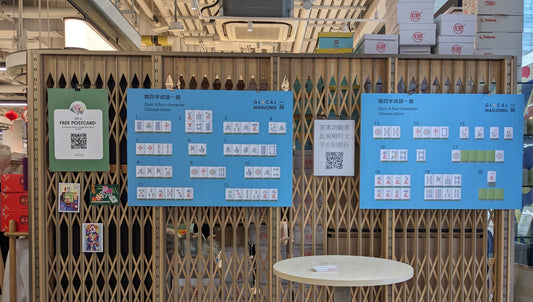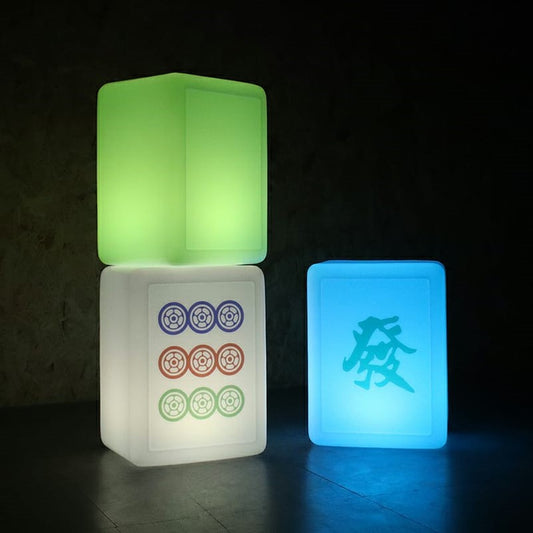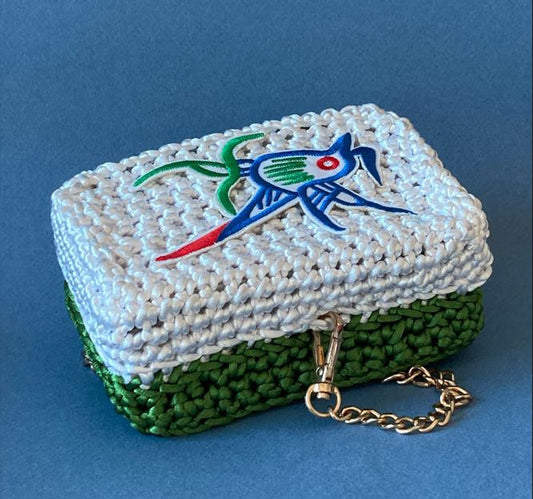Mahjong x Architecture
Our Mahjong X Cheongsam video is very much appreciated by our audience, we would like to expand this crossover concept into a series. This time, we will examine where mahjong and architecture share in common. Hope this will help you to deepen your understanding of these two important expressions of human culture.
A Mahjong tile comes in a standard ratio of 3 to 4 for its width and height with a depth ratio of 2.5. Despite the tile can come in different sizes, the ratio generally does not change. It makes them very good for packing and stacking. This may also be the reason why kids like to play with them as building blocks. Its sizes, though it may be larger in China and South East Asia, and smaller in places like Japan and Taiwan, are generally very handy. They can be shuffled and stacked into walls and 4 walls enclose a square in the centre, which is literally called by the Chinese a "square castle".
In architecture, modular size is a very important concept. Bricks and blocks come in a handy size that can be handled by a single person. Their standard proportions allow them to be laid in different patterns to form walls. And the walls, then form the enclosures of buildings. In old buildings, these walls could also be part of the structure that bears the load of roof, floors and people.
In architecture, building construction is very much affected by technology. With stronger machinery and power, units of much bigger size and heavier weight can now be lifted. Buildings composed of modules of room sizes were built by some avant-garde architects in the early years. Today, this type of construction could become mainstream. The whole rooms can be built offsite as prefabricated units and then brought to sites to compose buildings like lego blocks. We named this type of construction MiC, Modular Construction. It is seen as a more environmental way of building construction as it creates less dust, noise and waste. It also allows workers to work in a more pleasant factory environment and in better workflows that allow quality control easier.
Apart from the modular design, mahjong and architecture also share similar developments in the use of materials. The earliest mahjong was made in natural materials like bamboo and bone. More prestige ones could be in ivory or even jade. Parts were put together by mechanical joints. This gives the signature look of dovetail joints between the bone face and bamboo back appearing at the side of early mahjong.
Similarly in architecture, the earliest buildings were also built out of natural materials like timber, bamboo, stone or burnt mud and clay. They were assembled and held in place by mechanical joints, like dovetail, tongue-and-groove, and dowel.
To identify the tiles, graphics and fonts were painted on the tile faces. However, these surface paintings will not endure wear and tear. To make the markings last longer, the surfaces were engraved to hold the paint. These processes require good workmanship and craftsmen take years to learn the skill through systems of apprenticeship.
In architecture, we see similar working methods and systems. Buildings were decorated with engraving and paint. Builders picked up their skills over many years by learning from their masters, which in Chinese, are called Xifu.
With the invention of new synthetic materials like plastic and glue, the way mahjong and buildings are made, is totally revolutionized. Now mahjong is mostly made by casting plastic into moulds with built-in-relief of the graphic. Even the process of installing paint onto the grooves could now be automated.
In building synthetic materials like steel, concrete, plastic and resins have opened up many options for architects in designing their buildings. The availability of silicon, adhesive, and glues…. Make things bind seamlessly together without the need for any mechanical joints or fixings.
The development of computer-aided design and manufacturing processes like laser-cut, CNC machines, …. further make the tailor-design, intricate details and production in small quantities feasible and viable.
Apart from the making process, both mahjong and architecture reflect our relationship with the cosmo. Players in the mahjong game are seated in a cardinal arrangement with each place named after the four orientations of East, South, West and North. In buildings, we do not need to explain how important these four directions are in the design of the buildings. Generally, people in the northern hemisphere prefer to face south for the warm winter sunlight and hate the west direction for the built-up heat in the summer evening.
Both games and architecture reflect very much the culture of a place. Chinese seems to have a much bigger tolerance for noise and the word 熱鬧 which literally means hot and noisy, are seen as signs of happiness and prosperity. That is why the mahjong game is very much liked and in particular at the time of celebration and union, like Chinese New Year. In Chinese vernacular architecture, in many regions, people live around central courtyard spaces like a big family and share many amenities. Privacy seems much less an issue for the Chinese than its western counterpart.
Hope you now know more about mahjong and architecture. And if you think the way we compare mahjong with other things does help you to learn more, please let us know and I will prepare more videos in this direction.



